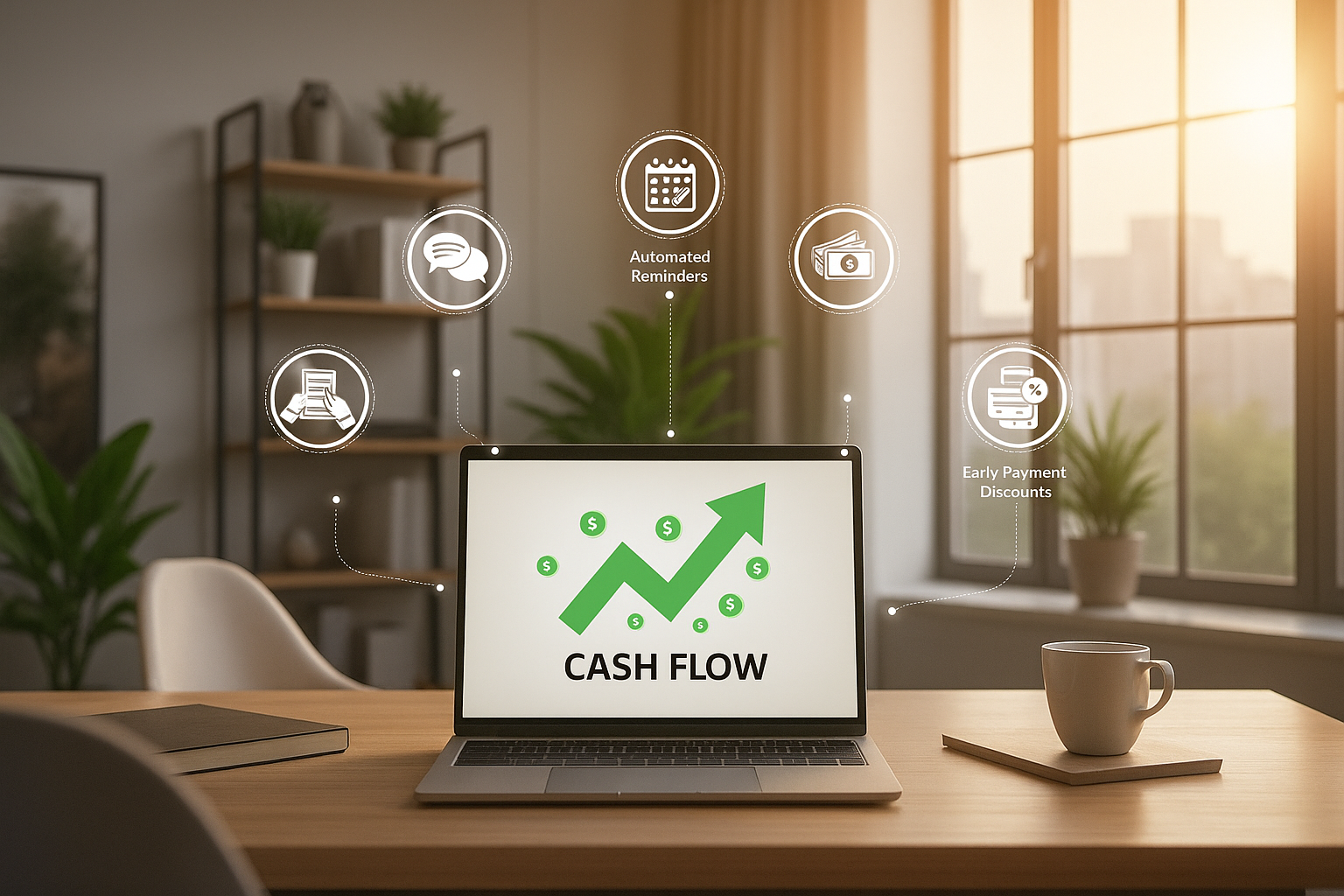Accounts Payable vs. Receivable: A Complete Guide for MSPs

MSP accounting, though challenging and time-consuming, is an essential pillar of your business. Accounts payable and receivable are the key pillars of any MSP’s payment management and accounting.
Accounts payable vs receivable is a common question many MSP business owners come across. But differentiating between the two is easier than you think.
Accounts payable refers to the money you owe, i.e., the money you need to pay to someone, such as vendors, suppliers, etc. Accounts receivable, on the other hand, is the money that is owed to you, i.e., the money you need to collect from customers or clients.
A healthy balance between the two is crucial for your MSP's financial health and cash flow.
Let’s delve deeper into the differences between accounts payable and receivable, plus how to handle them efficiently.

What are accounts payable (AP)?
Accounts payable or AP are the money that your MSP owes to others. This could be your creditors, vendors, suppliers, and so on.
AP represents a company's short-term liabilities — the amount it needs to pay back within a specific period of time (normally 30-90 days).

Types of accounts payable:
- Trade accounts payable
- Non-trade accounts payable
- Accrued liabilities
- Short-term borrowings
- Employee payables
- Tax liabilities
- Vendor rebates and discounts
- Unearned revenues
- Interest payable
- Utilities payable
- Rent payable
How to record accounts payable?
You can record accounts payable in two ways — accrual accounting and cash-based accounting.
In accrual accounting, accounts payable comprise the expenses a company owes, regardless of when the payment is made. For instance, when an invoice is raised, it’s recorded as an expense instead of when the payment is made.
When the actual payment is made, the accounts payable balance reduces accordingly.
In cash-based accounting, the expenses are identified only when the payment is made. While this method is more straightforward, it doesn’t provide a comprehensive view of the accounts payable. Since accounts payable comprise obligations and not cash transactions, cash-based accounting is less commonly used to record them.
Example of accounts payable
Suppose you have a contract with a technology hardware supplier to provide your clients with 20 laptops and 10 desktop computers. Your supplier delivers a batch of laptops and desktops to your office, along with an invoice of $15,000 for the delivered equipment.
In your accounting records, you’ll add these hardware expenses as “accounts payable.” And once you clear the invoice, that amount will be subtracted from the accounts payable balance.
Want to streamline your invoicing? Download our Ebook on Invoice Management for MSPs. Click Here to download.
What are accounts receivable (AR)?
Accounts receivable are the exact opposite of accounts payable. It’s the money your MSP has to collect from its clients and customers for the services you provide to them.
It represents your short-term assets, as you’re expecting to receive payment in the upcoming days (typically 30-90 days).

Accounts receivable primarily include customer prepayments (unearned revenue) but may also include other transactions like insurance claims and government grants/subsidies.
How to record accounts receivable?
Like accounts payable, accrual accounting is the go-to accounting method to record account receivables as well. You list accounts receivable as the current assets in your general ledger based on the invoices you generate. When you receive payments against the invoices, you subtract them from the accounts receivable balance.
Example of accounts receivable
Suppose you offer managed cybersecurity services to a manufacturing company. You generate a Net 15 invoice of $10,000 for the services you offer and send it to the customer. Once you send the invoice, it goes into your general ledger as accounts receivable.
Accounts receivable vs. payable: The difference
Relationship between accounts payable and receivable
Technically, accounts payable and receivable are opposites. But if you look at a transaction level, accounts receivable and payable co-exist, and one can’t exist without the other.
Accounts receivable are accounts payable to someone else, and payables are receivables to someone else. When you send your clients an invoice for your managed services, it’s accounts receivable for you and payable for them. When you receive an invoice for purchased hardware equipment, it’s accounts payable for you and receivable for the provider.
Both accounts receivable and payable are recorded in a company’s general ledger, and MSPs need to pay equal attention to both. Maintaining a healthy balance between the two will ensure consistent cash flow, improve financial reporting, and maximize working capital.

How to handle accounts payable and receivable?
Not handling accounts payable and receivable properly can result in cash flow problems, inconsistent financial reporting, and revenue loss. Here are some tips and best practices for MSPs to handle accounts payable and receivable.
Ways to handle accounts payable
Document, review, and organize invoices
Make sure you receive all the vendor invoices and keep them organized. This way, you’ll have clear documentation of your accounts payable.
Set up clear payment terms
Establish clear payment terms with your vendors and suppliers to ensure both parties understand the payment schedule, including discounts and penalties for early and late payments, respectively.
Ensure timely payment
Make timely payments as per the agreed terms to avoid late fees and take advantage of early payment discounts if available.
Use accounting software
Use a good accounting platform to streamline your invoices and payments. With accounting software, you can automate invoice processing and payment schedules, helping you maintain accurate records.
Ensure consistent reconciliation
Regularly reconcile your accounts payable and receivable records with supplier statements to eliminate discrepancies and ensure accuracy.
Monitor cash flow
Appropriately monitor your cash flow and budget to ensure you have the necessary funds to cover your accounts payable.
Ways to handle accounts receivable
Send clear, timely invoices
Send clear, accurate, and timely invoices to customers promptly. Set clear payment terms, due dates, and other terms & conditions to ensure all the parties are on the same page.
Establish clear credit policies
Establish well-defined credit policies for clients and customers, including credit limits, credit checks, and terms to reduce the risk of non-payment.
Set up a streamlined collection process
Have an efficient payment collection process in place to increase the chances of getting paid on time. Set up automated payment reminders and escalate efforts as necessary.
Maintain aging reports
Maintain aging reports to track the status of your outstanding accounts receivable, along with categorizing them based on how long they have been outstanding.
Use the right payment platform
It’s important to use a robust payment processing system that allows you to collect payments seamlessly and set up recurring payments. Zomentum Payments is an excellent payment platform for MSPs, as it allows you to collect payments on your invoices.
Zomentum Payments is here to help
Do you want to accept MSP payments easily without incurring hefty transaction fees? Embrace Zomentum Payments – the only payment processing system developed exclusively for managed service providers.
You can set up recurring payments to automate payment collection and plug revenue leakage. What’s more, Zomentum Payments allows you to collect payments on your quotes and invoices, making it easier to collect and track your payments.
Experience low transaction fees, no platform fees, backup payment methods, deep integrations, and much more!
So, switch to Zomentum Payments today and experience fast, convenient payment collection. Book a Demo today to get started.



.png)


.avif)








